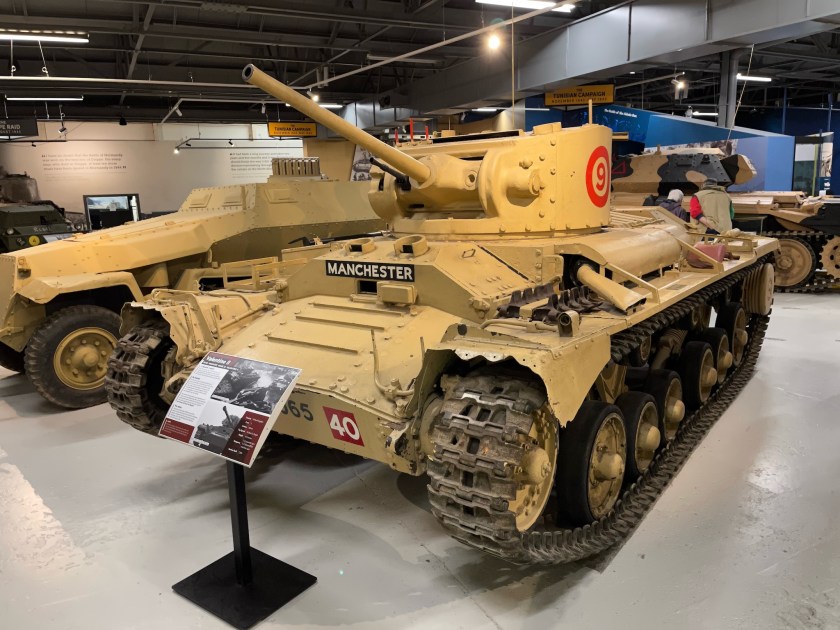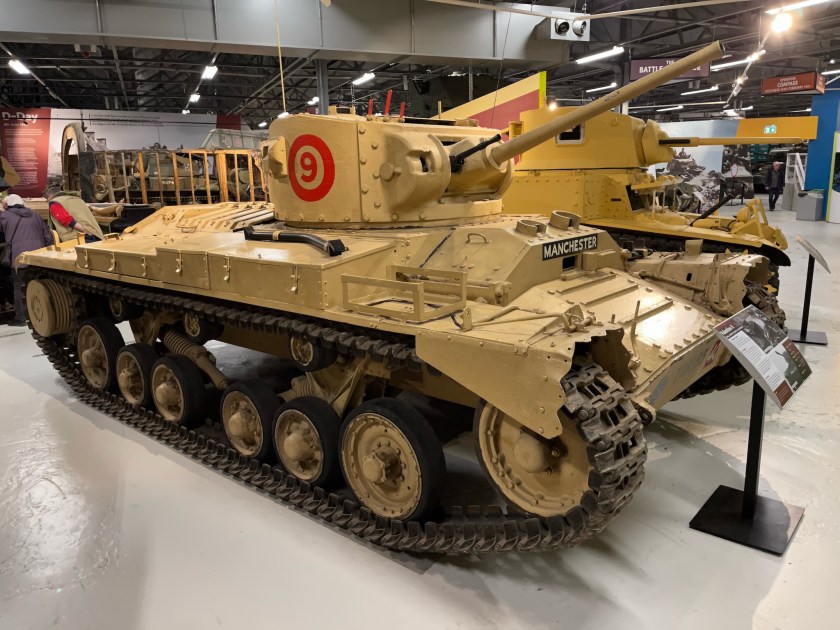The Self Propelled 17pdr, Valentine, Mk I, Archer was a British tank destroyer of the Second World War based on the Valentine infantry tank chassis fitted with an Ordnance QF 17 pounder gun. Designed and manufactured by Vickers-Armstrongs, 655 were produced between March 1943 and May 1945. It was used in north-west Europe and Italy during the war; post-war, it served with the Egyptian Army.
This Valentine Archer was on display at Bovington.
This vehicle was unusual in that its gun faced the rear of the chassis instead of the front.

The Valentine chassis was soon chosen, as it was in production but obsolescent for British use and was also one of the few chassis that could accommodate the size of the Ordnance QF 17 pounder.
The Archer served with some units of the Royal Armoured Corps in the British Army of the Rhine (BAOR) in the early 1950s. This makes them a possible unit for scenarios based in the world of Turtledove’s Hot War alternate history. Reading the Hot War books from Harry Turtledove has inspired me to think about gaming some scenarios from the books. British Comets and Centurions versus Russians T34-85 and T54 Soviet tanks with American M26 Pershing and M48 Patton tanks. In the book there are also Sherman manned by (West) German forces.







